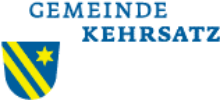- Corporate design
-
A corporate design is the official graphical design of the logo and name of a company or institution used on letterheads, envelopes, forms, folders, brochures, etc. The house style is created in such a way that all the elements are arranged in a distinctive design and pattern.
This includes dictating what ink pantones should be used in the coloring, and what typefaces.
Governments may have corporate designs as well. On June 2, 1999, the German federal cabinet introduced a corporate design for the flag of Germany.[1]
The term 'corporate design' is ambiguous and is not the name of a specific design profession. Instead, 'corporate' is used here as an adjective.
Corporations do have special design needs based on their behaviors. They communicate their mission, objectives, needs, and product information -- with users, clients, or members; with suppliers, distributors, service providers; with the surrounding community and the media; with financial institutions and other corporations, and with the state. They create, acquire, modify, organize and distribute large amounts of information and raw data, as well as goods and services. (Sometimes the goods or services are themselves information. For example, The Yellow Pages, or The New York Times.)
A designer whose client is a corporation will include the logo and other elements of the corporate brand as a way to standardize and unify all communication between company and audience, whether in print or online. Scenarios that includes human-computer interactions take place through software and hardware user interfaces that are also branded and designed with the corporate culture in mind. (Examples of user scenarios: update the Web site, transfer funds, document procedures, control security, operate machinery, plan projects, conduct virtual meetings, check inventory, fill an order, or ship a product.)
These interactions are increasingly taking place through Web sites, through mobile devices and at dedicated terminals, and may include sound, video, animation and user feedback mechanisms. A savvy designer will create designs that can be adapted to all of these applications.
See also
References
- ^ (German) Federal Government of Germany (17 December 2007). "Primärfarben". Corporate Design Documentation. http://styleguide.bundesregierung.de/Webs/SG/DE/Print-Styleguide/Basiselemente/Farben/Primaerfarben/primaerfarben.html. Retrieved 2008-02-26.
External links
See also: template Aspects of occupations · template Aspects of organizations · template Aspects of workplaces · template Corporate titles Abuse · Appointeeship · Censorship · Citizenship · Communication · Crime · Design · Entertainment · Ethics · Identity · Interlocks · Liability · Narcissism · Nationalism · Opportunity · Pathos · Promoter · Propaganda · Raid · Recovery · Resolution · Scandal · Security · Services · Social entrepreneurship · Social media · Social responsibility · Sourcing · Statism · Sustainability · Synergy · Tax · Taxonomy · Title · Trainer · Transparency · Travel · Trust · Veil · Video
This communication design related article is a stub. You can help Wikipedia by expanding it.

